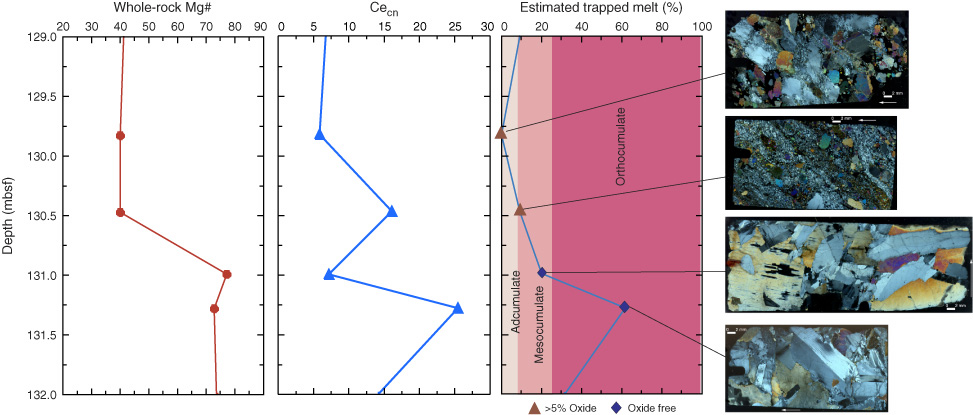
Figure F48. Downhole variation in whole-rock Mg# and estimated trapped melt (Banerji, 2005) over the depth range of 129–132 mbsf. Trapped melt was geochemically, not texturally, estimated using incompatible trace elements, mineral chemistry, modeled BLF liquid lines of descent, trace element Kd for major minerals, and modal analysis. Trapped melt percentages yield traditional textural classification as outlined by Irvine (1979, 1982): adcumulates = 0%–7% trapped melt, mesocumulates = 7%–25% trapped melt, and orthocumulates = >25% trapped melt. Also note thin sections of undeformed oxide-free gabbroic Samples 179-1105A-25R-2, 55–62 cm (130.99 mbsf), and 25R-2, 84–90 cm (131.28 mbsf) (lower two thin section images) overlain by deformed oxide gabbroic Samples 25R-1, 83–89 cm (129.83 mbsf), and 25R-2, 3–8 cm (130.47 mbsf). Lowest estimates of trapped melt are associated with the most deformed rocks; oxide-precipitating melts did not necessarily induce deformation starting at hypersolidus temperatures.


![]()